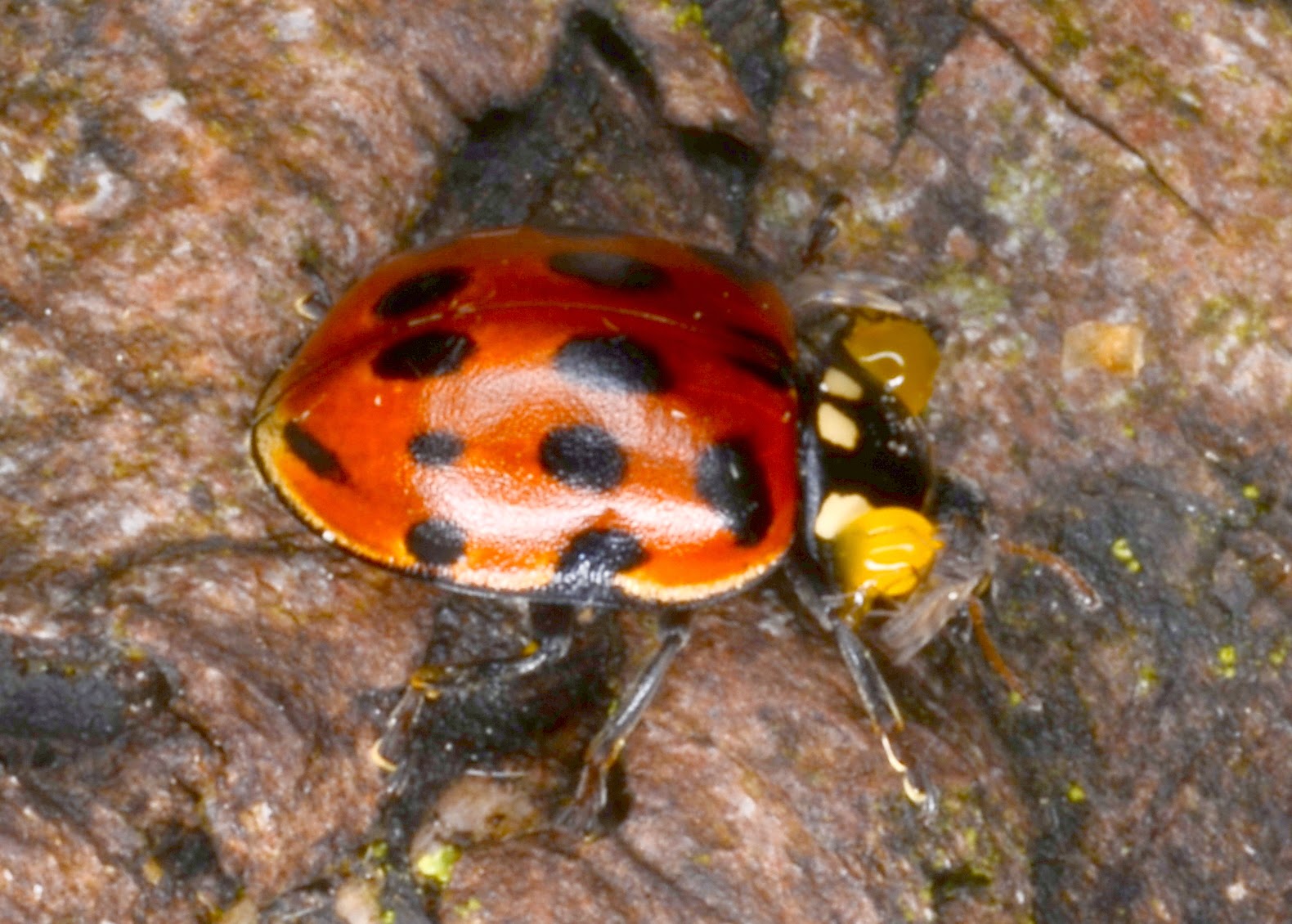After moving the one without the rings from the moth trap and putting it on some logs to photograph it, a peculiar thing happened that I wasn't aware of at the time and only noticed while processing the photos on the computer. Between the photo of it on the cable of the moth trap and placing it on the log, two yellow blobs have appeared, one each side of the pronotum.
What are these? are they something exuded by the ladybird as part of a defence strategy, or are they something more sinister? Also, what are those two winged insects doing: could they be attracted to the yellow substance? I wondered for a while whether I was seeing both ends of the yellow larva of the ladybird parasitic wasp Dinocampus coccinella, but I think they are just two blobs of yellow liquid.
Also attracted to the light was a burying beetle Necrodes littoralis, with its attendant mites, and also a small beetle with long antennae, which I haven't been able to identify, but may belong to the genus Luperus.
Finally, as I was packing up, I found this always impressive Carabus problematicus, which is the upland counterpart to the more familiar Violet Ground Beetle (Carabus violaceus).









My knowledge of ladybirds is sadly lacking, but I believe they can secrete a foul smelling yellow fluid when disturbed to deter predators. Lots of beetles do similar things as you probably know - Bloody-nosed beetles produce a red liquid from their mouthparts if you breathe on them, and some carabids vomit up their last meal, which is also pretty foul smelling! Suspect that the flies could be attracted to the smell, possibly carrion feeders? That C problematicus is stunning, isn't it? I found a Carabus granulatus a few days ago which looked like it had been etched in bronze, but no camera at the time unfortunately!
ReplyDeleteThanks Adam. I had a feeling it was something along those lines. The violet iridescence on that problematicus was as vivid in real life as it is in the photo.
ReplyDeleteActually, I take back the comment I made on the colour of the Carabus problematicus. I don't know what has happened in the uploading process, but the violet has become greatly enhanced. As you can see from the colour of the general detritus and spruce needles surrounding the beetle, I haven't boosted the colour and in the version of that picture I have on my computer, the violet is rendered in a far more subdued and realistic way.
ReplyDelete